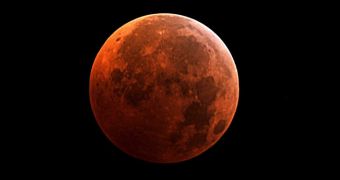In just a few months, astronomers will get the chance to study a long-period comet that goes by the name of Siding Spring in unprecedented detail. This is because, come October 19, this comet will brush very close to Mars.
This particular comet was discovered back in January 2013 by scientists in Australia, and is now on its first trip to the inner Solar System. Once it completes this journey, it will not make another appearance for about one million years.
Scientists with NASA (the National Aeronautics and Space Administration in the United States) explain that the comet will come within 135,000 kilometers (approximately 83,885 miles) of the Red Planet on said date.
To put things into perspective, it must be said that this distance is less than half the one between our planet and the moon. In fact, the comet will come so close to the Martian surface that it will interact with the Red Planet's atmosphere.
More precisely, it is expected that, on October 19, some of the gas and dust that make up Siding Spring's atmosphere, otherwise known as the coma, will enter Mars' upper atmosphere and alter it to a certain degree.
As explained by Nature, the Red Planet is currently orbited by three spacecraft, i.e. NASA’s Mars Odyssey and Mars Reconnaissance Orbiter, and the European Space Agency’s Mars Express.
By the time comet Siding Spring reaches Mars, two other spacecraft, i.e. NASA’s Mars Atmosphere and Volatile Evolution [MAVEN] mission and India’s Mars Orbiter Mission, are scheduled to join the party.
Cometary dust coughed out by the comet is estimated to head towards Mars at a speed of 56 kilometers per second (34.8 miles per second). Hence, there have been some concerns that spacecraft orbiting the planet might be damaged during the fly-by.
The good news is that, according to recent data, this comet is not spewing out all that much debris and, therefore, is not all that big of a threat. More so since, when it passes by Mars, spacecraft orbiting the planet will make sure to get out of its way.
Astronomers hope that, with the help of the spacecraft, and the Opportunity and Curiosity rovers, they will be able to study comet Siding Spring in unprecedented detail. Specifically, they hope to obtain images of its dust cloud and gain a better understanding of its shape and makeup.
“This is our first chance to see the nucleus of a long-period comet up close. Mars will be right at the edge of the debris cloud,” says researcher Richard Zurek, chief scientist for the Mars program office at the Jet Propulsion Laboratory in Pasadena, California.

 14 DAY TRIAL //
14 DAY TRIAL //